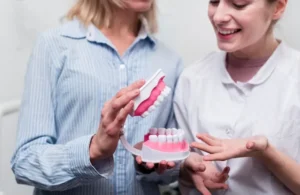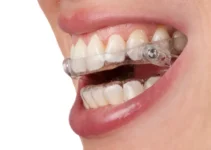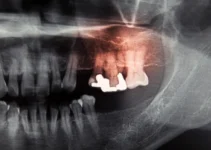Fixed dentures provide a permanent solution for those missing teeth, combining convenience with the aesthetics of natural teeth. Unlike traditional removable dentures, fixed dentures are securely attached to dental implants, offering enhanced stability and preventing bone loss over time. In this article, we delve into the benefits, maintenance needs, and process of obtaining fixed dentures, helping you understand if they are the right choice for restoring your smile and functionality.
Types of Fixed Dentures
Fixed dentures are a popular solution for patients seeking to replace missing teeth. Unlike removable dentures, fixed dentures are attached permanently, offering greater stability and function. Advances in dental technology, particularly in CAD/CAM systems, have further enhanced the predictability and reliability of these prosthetic solutions. Below, we explore the various types of fixed dentures, their unique benefits, and the advanced techniques used in their creation and implementation.
Understanding the different types of fixed dentures is essential for selecting the most appropriate option based on a patient’s specific needs. This section will cover dental bridges, implant-supported dentures, and All-on-4 implants, providing a comprehensive overview of each.
Dental Bridges
Dental bridges are a common type of fixed denture that literally “bridges” the gap left by missing teeth. They are anchored onto the adjacent teeth, known as abutment teeth, and the false tooth, or pontic, sits in the gap. The materials used for dental bridges can vary, but porcelain and ceramic are popular choices due to their natural appearance and durability.
Recent developments in CAD/CAM technology have significantly improved the precision and fit of dental bridges. According to Rekow (1991), the state-of-the-art CAD/CAM systems have enabled dentists to create highly accurate and customized dental prostheses, leading to better outcomes for patients. This technology allows for the digital design and milling of dental bridges, reducing the margin of error and ensuring a more comfortable fit.
Dental bridges are ideal for patients who have one or more missing teeth but still have healthy teeth adjacent to the gap. The main benefits of dental bridges include:
- Enhanced aesthetics by filling gaps in the smile.
- Improved speech and chewing function.
- Prevention of teeth shifting into the empty space.
Implant-Supported Dentures
Implant-supported dentures are another popular type of fixed denture that offers a stable and secure solution for missing teeth. These dentures are anchored directly into the jawbone using dental implants, providing a strong foundation that mimics natural tooth roots. This stability makes implant-supported dentures an excellent option for patients with multiple missing teeth or those who have experienced bone loss.
The process of placing implant-supported dentures involves several steps, including the surgical insertion of implants, a healing period, and the attachment of the dentures. Advances in CAD/CAM technology have streamlined this process, making it more efficient and predictable. According to Bentz and Balshi (2012), the use of CAD/CAM technology in conjunction with conoscopic holography and stereolithography has resulted in highly accurate implant placements and prosthetic designs.
Benefits of implant-supported dentures include:
- Long-term stability and durability.
- Prevention of bone loss due to the stimulation of the jawbone.
- Enhanced comfort and natural feel.
All-on-4 Implants
The All-on-4 implant technique is a revolutionary method for patients requiring a full arch replacement. This approach uses only four strategically placed implants to support a full set of dentures, providing a cost-effective and efficient solution for complete oral rehabilitation. This method was designed to maximize the use of available bone and often eliminates the need for bone grafting, making it a viable option for patients with significant bone loss. The strategic positioning of the implants ensures optimal support and durability, allowing patients to regain full oral functionality.
Utilizing CAD/CAM technology, the All-on-4 procedure can be planned and executed with high precision. According to Güth et al. (2012), CAD/CAM-fabricated provisional prostheses enhance the predictability of complex rehabilitations, ensuring better outcomes and patient satisfaction.
The benefits of All-on-4 implants include:
- Immediate function with same-day teeth.
- Cost-effectiveness compared to placing individual implants for each missing tooth.
- Minimized need for bone grafting.
If you found this article informative, consider exploring our other articles on dental technology and advanced prosthetic solutions to further expand your knowledge.
Benefits of Fixed Dentures
Durability and Longevity
Fixed dentures, particularly those created using CAD/CAM technology, offer exceptional durability and longevity. According to Rekow (1991), these systems provide high precision in the fabrication process, significantly reducing the chances of material defects or fitting issues. The accuracy of CAD/CAM-fabricated prostheses ensures that they can withstand the rigors of daily use.
Stawarczyk et al. (2012) demonstrated that the load-bearing capacity of CAD/CAM milled polymeric prostheses is enhanced through precise manufacturing and quality control. This precision not only extends the lifespan of the fixed dentures but also minimizes the need for frequent adjustments or replacements, which can be both costly and time-consuming for patients.
Enhanced Oral Function
Fixed dentures, especially those anchored by dental implants, offer significant improvements in oral function. Güth et al. (2012) noted that the predictability of complex rehabilitations is greatly enhanced with CAD/CAM-fabricated long-term provisional prostheses. These prostheses provide a stable and secure fit, which is critical for efficient chewing and speaking functions.
Compared to removable dentures, fixed dentures eliminate the common issues of slipping and discomfort. Patients with fixed dentures report a more natural feeling when eating and talking, allowing for a more confident and comfortable experience. This is particularly important for patients who require full-mouth rehabilitation, as noted by Bentz and Balshi (2012).
Aesthetic Improvements
The aesthetic benefits of fixed dentures are considerable. Modern CAD/CAM technology allows for the creation of prostheses that closely mimic the appearance of natural teeth. This includes accurate color matching, translucency, and overall shape, which contribute to a more natural and pleasing appearance. Enhanced aesthetics are not just about vanity; they also play a crucial role in the patient’s overall self-esteem and social interactions. A well-fitted, aesthetically pleasing fixed denture can significantly improve a patient’s quality of life, making them more likely to smile and engage confidently in social situations.
Understanding these benefits helps both dentists and patients make informed decisions about the types of dental prostheses that best suit their needs. For more insights into the latest advancements in dental technology, be sure to read our other articles.
Caring for Your Fixed Dentures
Maintaining your fixed dentures is crucial for ensuring their longevity and your oral health. Modern dental technology, such as CAD/CAM systems and stereolithography, has greatly improved the predictability and durability of fixed dentures. However, the longevity of these prostheses largely depends on how well you care for them. In this guide, we will outline essential tips for maintaining your fixed dentures.
Failure to properly care for your fixed dentures can lead to complications such as plaque buildup, gum disease, and other oral health issues. By following a consistent cleaning routine, you can prevent these problems and keep your dentures in optimal condition. Additionally, proper care helps to maintain the esthetic appearance and functionality of the prosthesis, contributing to an overall better quality of life.
Daily Cleaning Routine
A thorough daily cleaning routine is vital for the maintenance of your fixed dentures. This routine helps to remove food particles, plaque, and other debris that can accumulate throughout the day. Here are some steps you should follow:
- Use a soft-bristled toothbrush to clean your dentures. Hard bristles can scratch the surface of the prosthesis.
- Apply a non-abrasive denture cleaner or mild soap. Avoid using regular toothpaste, as it can be too abrasive and cause damage over time.
- Brush all surfaces of the dentures, including the areas that come in contact with your gums, to ensure they are thoroughly cleaned.
- Rinse your mouth and dentures thoroughly with water after cleaning to remove any residue from the cleaning agents.
It’s also important to clean your gums, tongue, and any remaining natural teeth. Use a soft toothbrush and, if necessary, an oral irrigator to reach difficult areas. This helps to prevent gum disease and ensures the health of your entire oral cavity.
Regular dental check-ups are a critical part of your cleaning routine. These appointments allow your dentist to monitor the condition of your fixed dentures and address any issues promptly. During these visits, your dentist will perform a professional cleaning to remove any stubborn plaque or tartar that you might have missed during your daily routine.
By adhering to these guidelines, you can extend the life of your fixed dentures and maintain a healthy, attractive smile. For more insights and advanced tips on dental care and oral health, be sure to explore our other articles.
Common Questions on Fixed Dentures
Understanding fixed dentures is crucial for anyone considering them for oral rehabilitation. Here are some key questions addressed to enhance your knowledge and decision-making process.
What are the main benefits of using CAD/CAM technology in creating fixed dentures?
CAD/CAM technology offers precision in the fabrication of fixed dentures, ensuring a better fit and more natural appearance. This technology allows for detailed customization and adaptation to each patient’s unique dental structure. It also speeds up the manufacturing process and improves the overall durability and quality of the dental prosthesis.
How does the material used in CAD/CAM milled fixed dentures affect their longevity?
The materials used in CAD/CAM milled fixed dentures, such as ceramics or composite resins, are selected for their high durability and wear resistance. Studies show that these materials can withstand the rigors of daily use better than traditional materials. Moreover, the precision of CAD/CAM milling helps in creating a structure that equally distributes the force across the denture, reducing the risk of fractures and extending the life of the prosthesis.

My name is Salman Kapa, a 73-year-old expert in bone regeneration and dental implantology. With decades of experience in the field, I am dedicated to advancing our understanding of oral health and hygiene. Through my research and writing, I aim to contribute to the development of innovative solutions in dental care.




